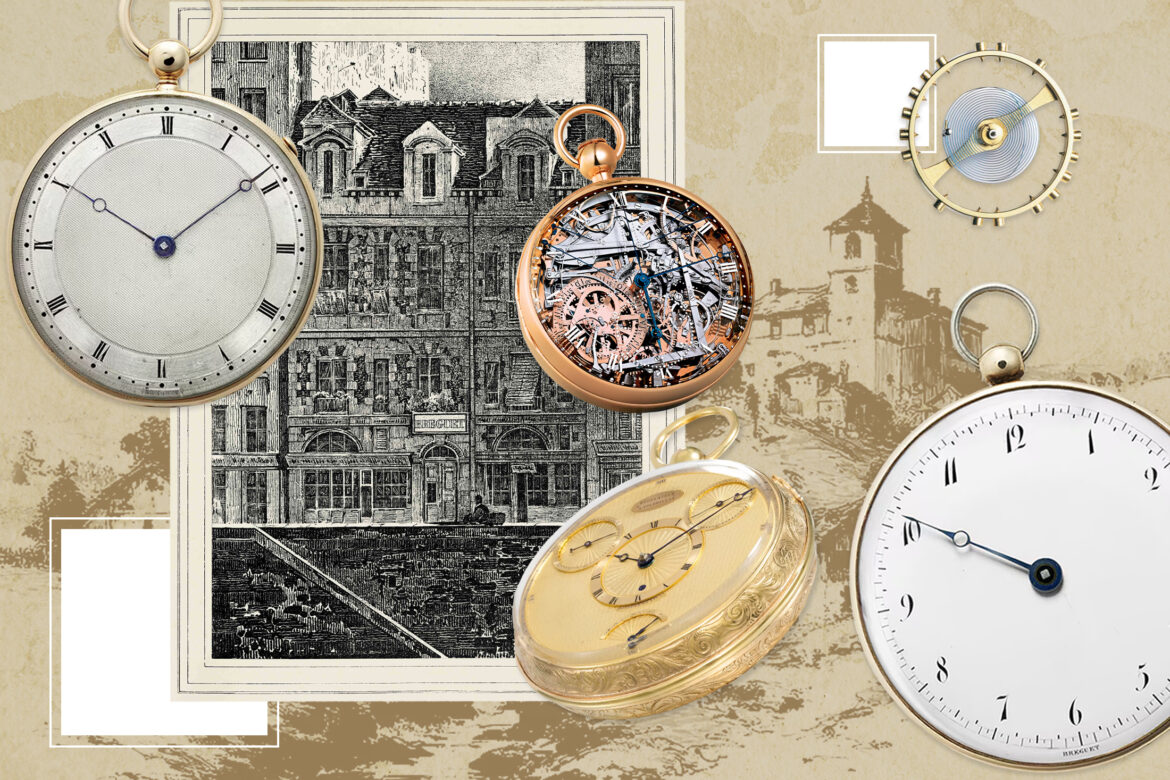Breguet remains the benchmark of high watchmaking, continuously blending ingenuity with tradition over a distinguished and ever-evolving heritage of 250 years since 1775.
This year, Swiss luxury watchmaker Breguet marks an extraordinary milestone, 250 years of exquisite craftsmanship and innovation. Breguet’s storied history has the makings of a movie, beginning with Abraham-Louis Breguet, a young dreamer from Neuchâtel not known for academic ambitions.
In 1762, he left the comfort of his hometown to pursue a watchmaking apprenticeship in Versailles and Paris. His talent blossomed during a stint working with master watchmaker in Les Verrières, where his exceptional skill was soon noticed.
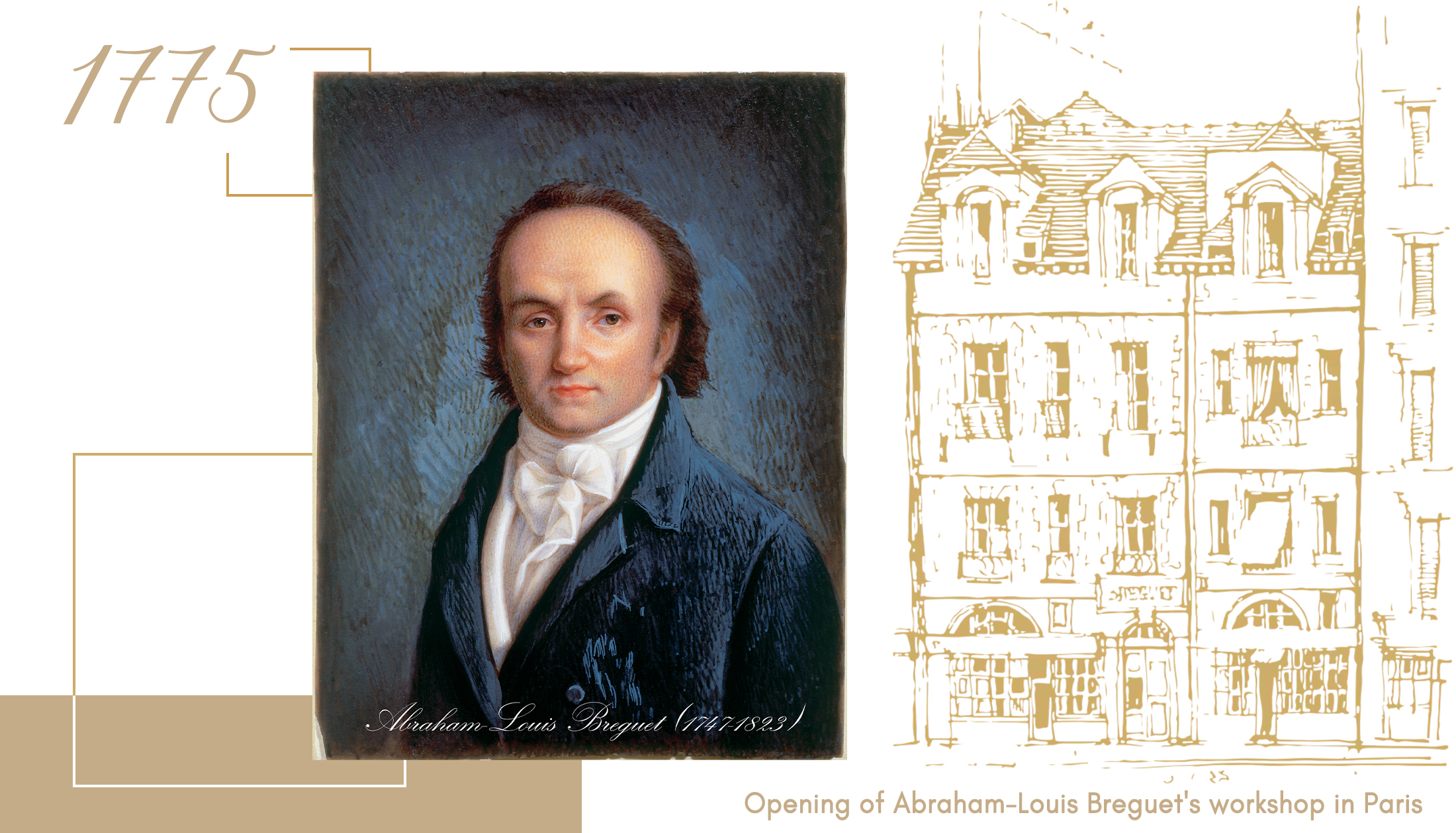

Movement, Breguet no. 1176
By 1775, armed with extensive horological knowledge, Breguet established his own workshop on the Quai de l’Horloge in the Île de la Cité, Paris. His genius culminated in 1801 with the invention of the tourbillon, a complication designed to counteract the effects of gravity on a watch’s accuracy. Breguet devised a rotating cage mechanism that held the escapement and balance wheel, which, by rotating once per minute, mitigated positional errors and significantly improved precision.
From conception to patent and perfection, Breguet dedicated over a decade to this innovation, producing only 40 tourbillon watches during his lifetime, each a masterpiece of both artistry and engineering. Breguet’s creations soon caught the attention of royalty.
In 1793, Queen Marie-Antoinette of France became an avid admirer, owning many of his exquisite timepieces and enthusiastically recommending his craftsmanship to the kingdom and courtly elites alike. She was a regular patron of his workshop on the Quai de l’Horloge until her tragic demise, famously requesting and receiving “a simple Breguet watch” in her prison cell at the Temple in September 1792, just before her execution.

One of the most renowned pieces associated with her is the No. 160, known as the “Marie-Antoinette.” Ordered in 1783 by an anonymous officer of the Queen’s Guards, this timepiece was intended to hold every known horological refinement, complication, and function of the era. The order knew no bounds in time nor cost, and Breguet worked tirelessly to complete it many years after the French Revolution. He kept the watch hidden in a secure location, and in doing so, demonstrated his unwavering loyalty to the queen.
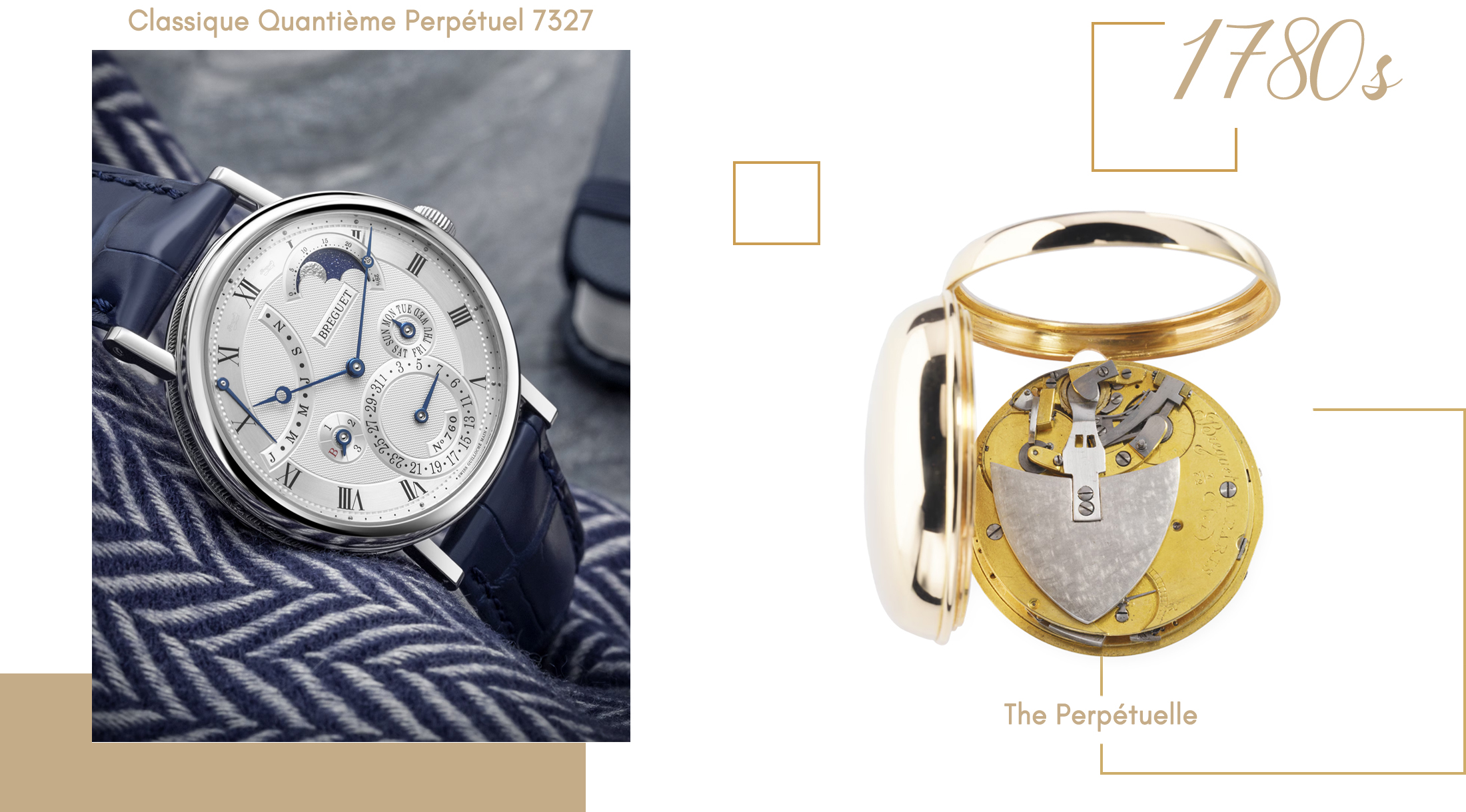
Today, the Breguet 7327 pays homage to these historic “perpétuelle” watches from the 1780s, blending complex mechanical ingenuity with elegance. Its slender case and refined display embody Breguet’s ongoing leadership in calendar complications and classical haute horlogerie, standing as a testament to a legacy built on innovation, artistry, and enduring excellence.

Another notable royal figure was Caroline Murat, Queen of Naples and Napoleon’s youngest sister. Between 1808 and 1814, Breguet supplied her with 34 clocks and watches. This close relationship inspired the creation of the world’s first wristwatch.
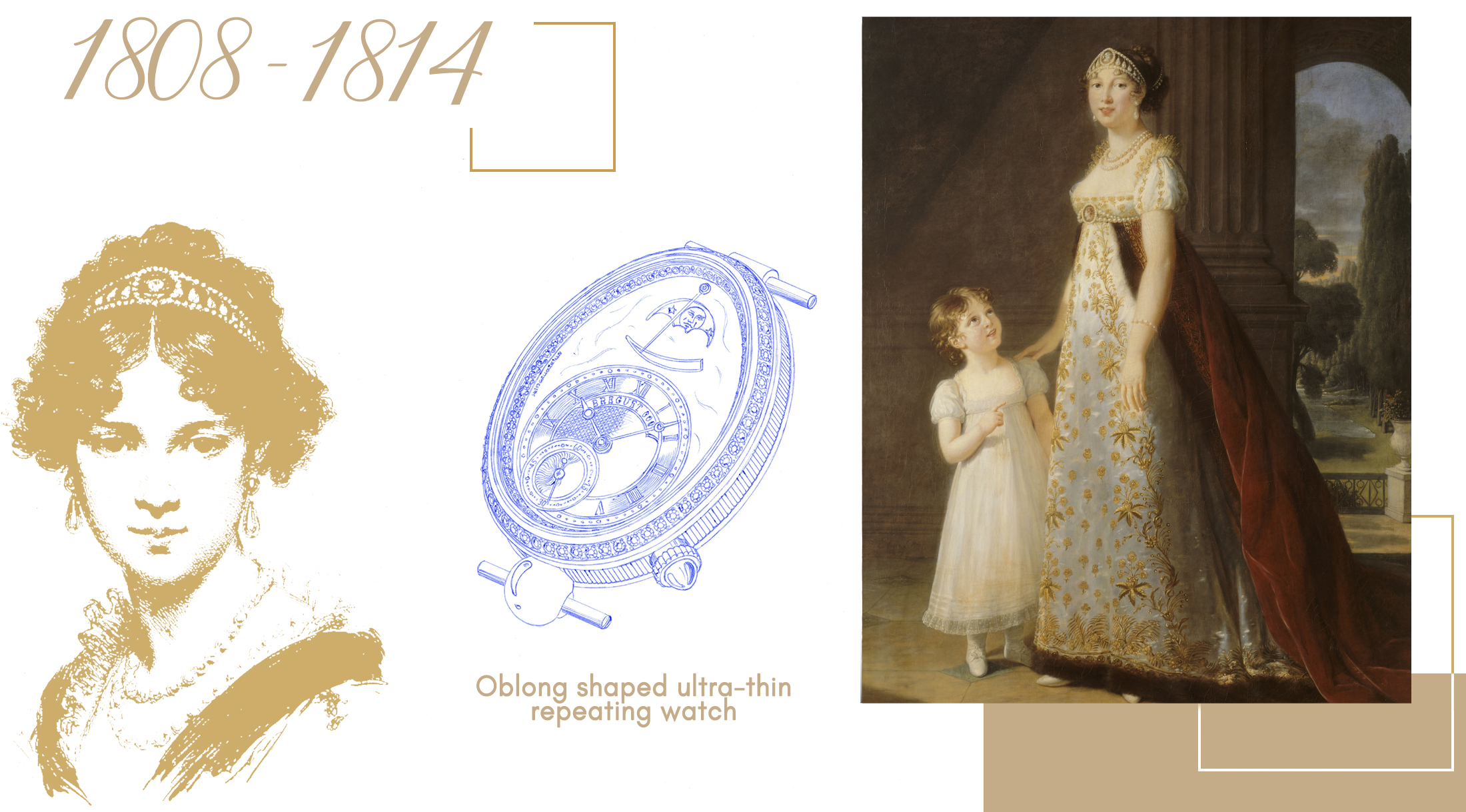
Considered revolutionary at the time, this ultra-thin repeating watch was oblong in shape, equipped with a thermometer, and mounted on a bracelet woven from hair intertwined with gold thread. Breguet’s dedication to fulfilling Queen Caroline’s desires was unfaltering, and he received well-deserved recognition for his ingenuity.
Emmanuel Breguet, the seventh-generation descendant of Abraham-Louis Breguet, brings a wealth of knowledge in economics and technology. He now oversees the archives housed in the Breguet Museum in Paris, located in Place Vendôme, as well as the Breguet museums in Zurich and Shanghai. He is also the author of Breguet: Watchmakers Since 1775, a comprehensive 451-page volume.
He reveals that the order from the Queen of Naples, which was designated as No. 2639 in Breguet’s records, bears the unusual name “repeater in oblong form for bracelet.”
The production commenced on August 11, 1810, and was completed on December 21, 1812. The production register also tells us that this watch had a lever escapement and a thermometer, as well as being fitted with a gold-trimmed hair bracelet.
Emmanuel Breguet, the seventh generation of the founder

Register of Commissions
During the summer of 1813, with Europe experiencing its most acute crisis and the company having lost many key clients, Queen Caroline purchased an additional 12 watches, eight repeating and four simple, from her favourite watchmaker. This purchase provided a vital financial boost during a turbulent period.

1815 – Abraham-Louis Breguet’s marine chronometer
In 1815, King Louis XVIII of France honoured Breguet’s achievements by appointing him Chronometer-maker to the French Royal Navy. From that point onward, the reliability of Breguet’s marine chronometers became critical to the success of royal expeditions, a distinction both prestigious and weighty.
The term chronomètres de marine means precision watches designed specifically for the French navy’s needs, whether for warfare or trade. Typically housed in a large cylindrical brass casing, these chronometers were attached to sturdy wooden boxes, usually crafted from mahogany, by brass gimbals that served as stabilisers and shock absorbers. Placed at the heart of a ship, often in the captain’s quarters, these chronometers were among the most valuable instruments onboard, primarily used to calculate longitude at sea.
Over the years, Breguet’s descendants gradually shifted their focus away from watchmaking, venturing into fields such as electricity, scientific instruments, and ultimately aviation. In 1870, Louis-Clément Breguet, the third generation, sold the watchmaking division of the company to his workshop manager, Edward Brown. The Brown family continued to operate the company for a century.
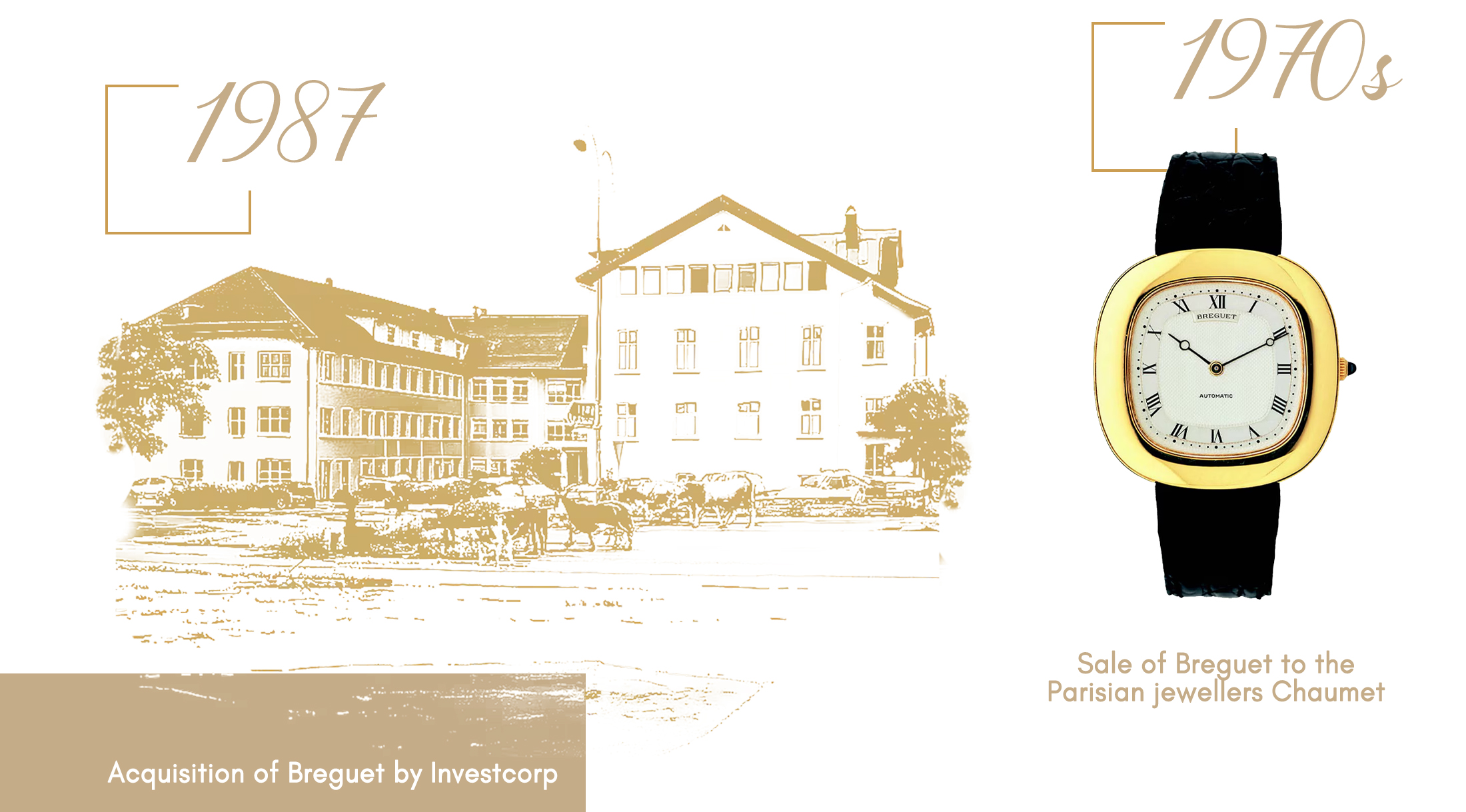
In the 1970s, amid the rise of quartz watches, Breguet changed ownership once again, being acquired by the Chaumet brothers, heirs to a prestigious jewellery Maison. Under their leadership, Breguet refocused on high-end watchmaking, specialising in complex, traditionally styled timepieces.
In 1987, the brand was purchased by the financial firm Investcorp, which, leveraging favourable economic conditions, enabled Breguet to expand into new markets across Asia and North America. Finally, in 1999, Breguet became the 15th Maison to join the Swatch Group, where it remains until today.

Breguet’s distinguished collections, Marine, Tradition, Classique, and Reine de Naples, each embody a unique facet of the brand’s horological heritage, drawing on centuries of technical mastery and aesthetic innovation
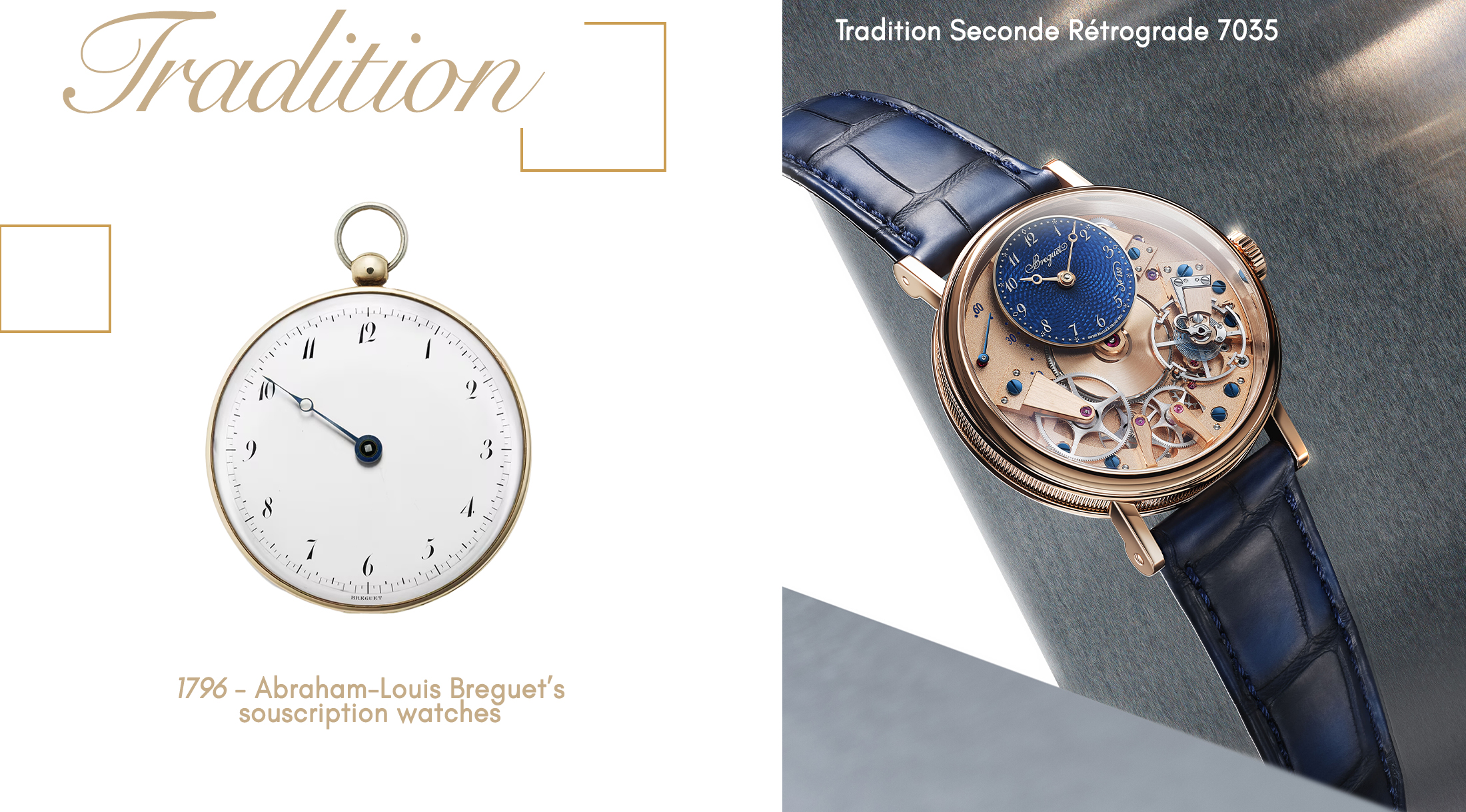
Tradition pays homage to Breguet’s pioneering spirit by showcasing exposed movement architecture inspired by Abraham-Louis Breguet’s 1796 souscription watches. It features inverted, open-worked dials revealing components typically hidden, such as the pare-chute shock system, mainspring barrel, and gear train, merging 18th-century origins with cutting-edge, avant-garde design. Watch is hand-finished with classic sandblasting, while visible bridges and wheels highlight the mechanical artistry of each movement.

Classique boasts round cases in precious metals, Breguet hands, Roman numerals, guilloché dials, and “Grand Feu” enamel, ranging from understated three-hand watches to intricate grande complications. Renowned for perpetual calendars, tourbillons, minute repeaters, and detailed hand engraving, every piece reflects the art of classic horology.
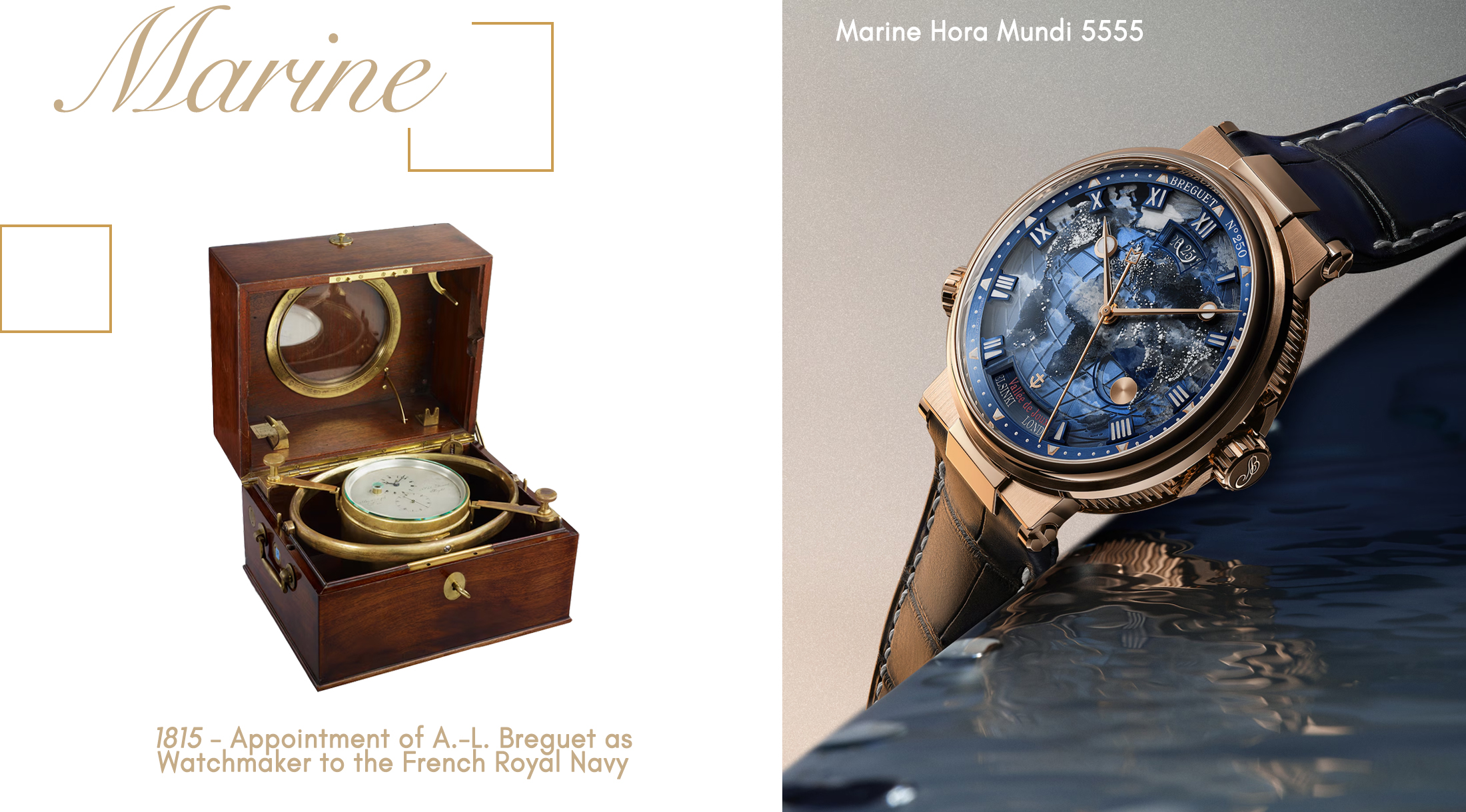
Marine draws inspiration from Breguet’s appointment as the official chronometer maker to the French Royal Navy in 1815, celebrating the resilience and precision of maritime navigation. It is described as sports-oriented watches with reinforced cases, protected crowns, and water resistance, all crafted with Breguet’s signature elegance. It has wave-motif guilloché dials, Roman numerals, luminous hands, blending seafaring function with luxurious style.
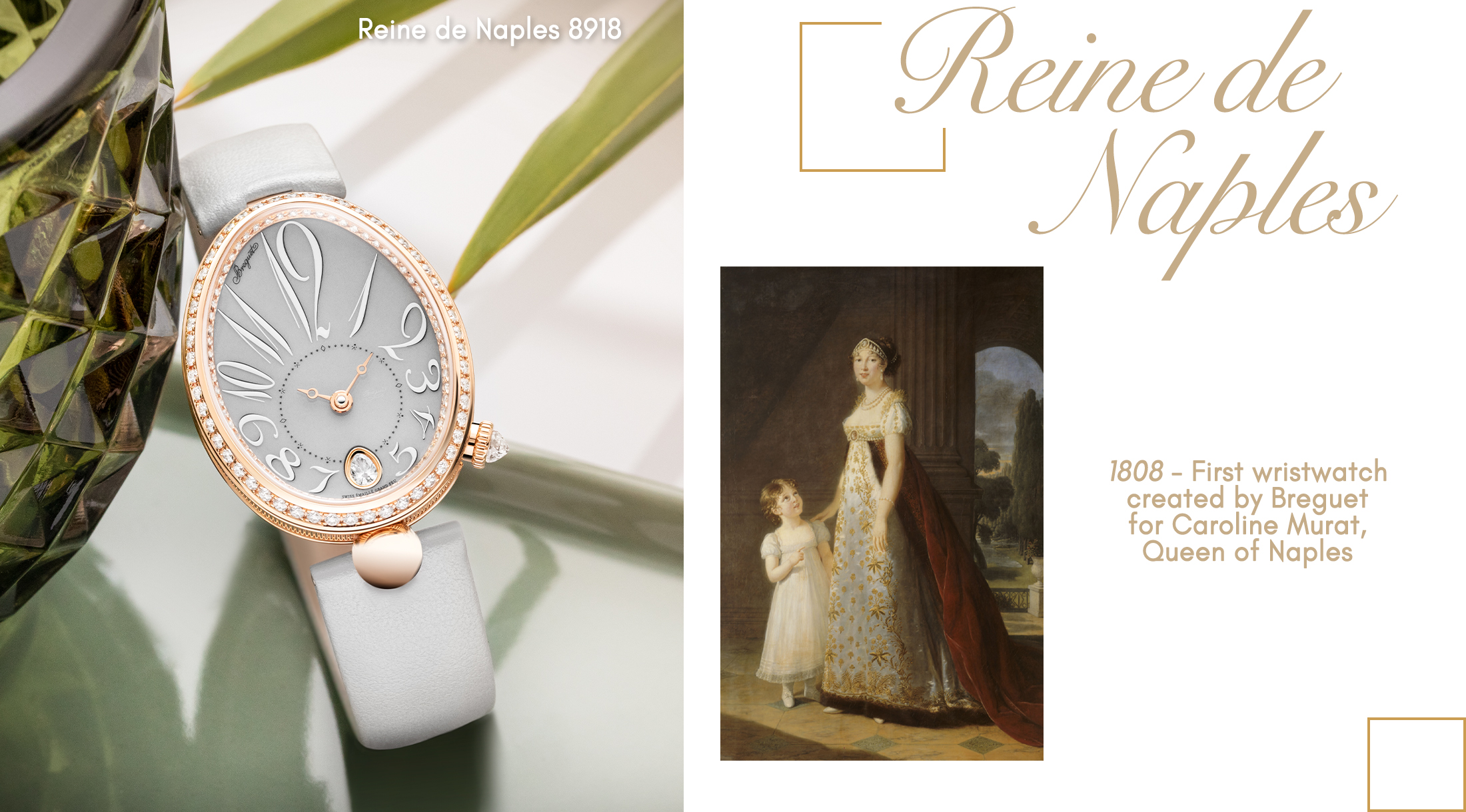
Reine de Naples honours the first wristwatch created by Breguet for Caroline Murat, Queen of Naples, a true milestone in feminine haute horlogerie. It stands out with its iconic oblong, egg-shaped case, pearl motifs, and often adorned with moon phases and intricate jewellery settings. Precious materials such as gold, mother-of-pearl, and diamonds are used alongside vibrant colour palettes and meticulous bracelet designs, emphasising both jewellery art and mechanical excellence.
Images courtesy of Breguet, artwork by Curatedition. All rights reserved.
Related links:
Breguet Reine de Naples: The Queen’s Gambit
Breguet: Centre of the Horological Universe
Breguet Marine: Three Classics in New Guises

